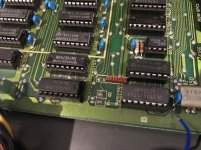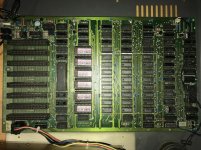Hello Clint,
at this point just some infos and a reminder....
the images of the ROMs are downloadable from:
http://mirrors.apple2.org.za/Apple .../Computers/Apple II/Apple II plus/ROM Images/
the Eprom should be a 2716
please avoid the use of a 27C16....
If you replace ROM with Eprom be aware that the EPROM has slight other behaviour and a small modification is demanded:
http://www.appleii-box.de/H019_ROMtauschGG2716imAppleIIP1.htm
like explaines in the previous posting it might be recommended to replace socket....
before you make such attempt i'd recommend to reread this page:
http://www.appleii-box.de/D05_basicsoldering.htm
and probably it's a good idea to repeat the exercises proposed there....
sincerely
speedyG
at this point just some infos and a reminder....
the images of the ROMs are downloadable from:
http://mirrors.apple2.org.za/Apple .../Computers/Apple II/Apple II plus/ROM Images/
the Eprom should be a 2716
please avoid the use of a 27C16....
If you replace ROM with Eprom be aware that the EPROM has slight other behaviour and a small modification is demanded:
http://www.appleii-box.de/H019_ROMtauschGG2716imAppleIIP1.htm
like explaines in the previous posting it might be recommended to replace socket....
before you make such attempt i'd recommend to reread this page:
http://www.appleii-box.de/D05_basicsoldering.htm
and probably it's a good idea to repeat the exercises proposed there....
sincerely
speedyG


